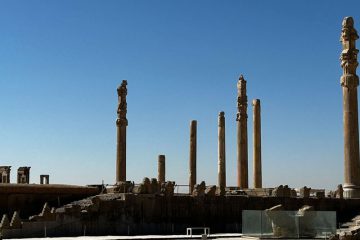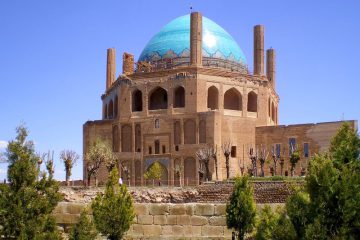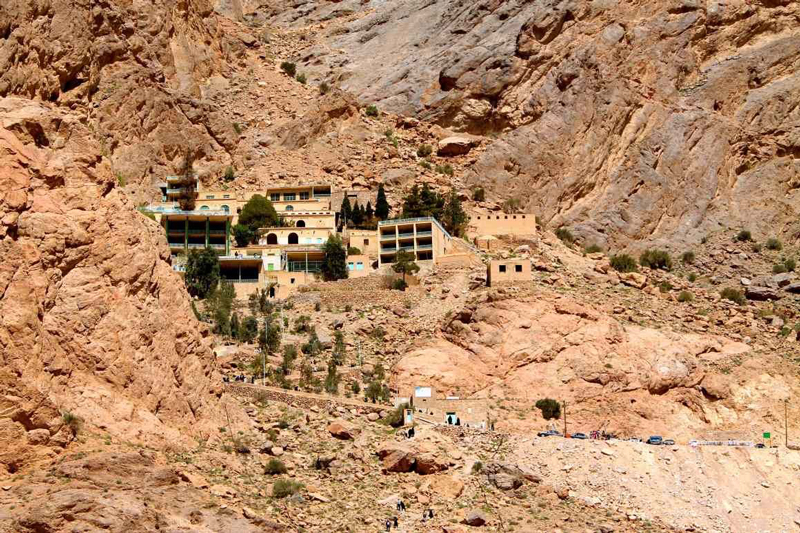
Chak Chak Shrine
Chak Chak Shrine, or Pir-e Sabz, is a significant pilgrimage destination for Zoroastrians, Situated in the Chak Chak mountains. The mysteries and legends add to its charm, creating an aura of mystery that makes it a distinctive and somewhat undiscovered treasure.
Chak Chak is more than just a physical site; it is a powerful symbol representing the unity cherished by the Zoroastrian community. Amidst the Chak Chak mountains, this shrine becomes a focal point, fostering a sense of shared spirituality.
This shrine has a distinctive trait: water drips from the ceiling, fostering the growth of an ancient plane tree and other plants such as myrtle, Persian Ironwood, and mountain figs on its rocky surface.
Due to its religious significance for Zoroastrians, the endeavors of Zoroastrians, both within and outside Iran, in building, caring for, and conserving this site are noteworthy.
As a religious center, Chak Chak welcomes Zoroastrians from Iran and around the world for collective religious ceremonies at specific times of the year.
Main Ceremony In Chak Chak Shrine
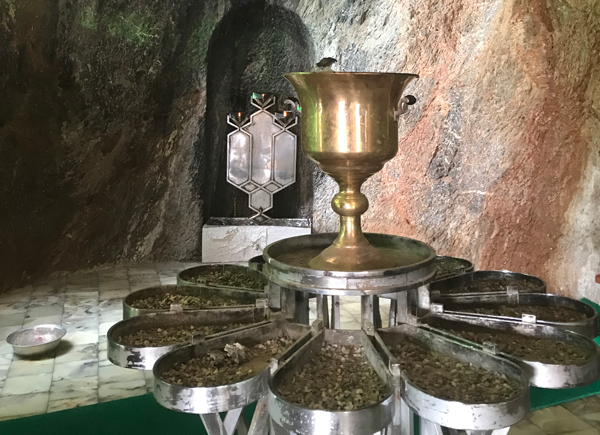
One such ritual takes place from June 14th to 17th (24th to 27th of Khordad), bringing together Zoroastrians for prayer, communal worship, Avesta readings, invocation of Ahura Mazda, cooking votive meals, lighting candles and incense, and singing joyous hymns. This ceremony holds such significance that it’s commonly known as the Zoroastrian Hajj.
The history of Chak Chak Shrine is debated among historians and religious scholars. According to available information, the shrine was formed around 1370 years ago after the death of Yazdegerd III, the last Sassanian king. Legends suggest it was built due to the disappearance of Yazdegerd’s daughter, initiated by a shepherd and Zoroastrian elders.
Today, Chak Chak Mountain is a sacred site for Zoroastrians, deeply connected to the religious practices of Iranians during the Sassanian era when Zoroastrianism was the official religion. The shrine is significant for Zoroastrians because of their active role in building and caring for it.
Legend has it that during the Arab invasion and the fall of the Sassanian dynasty, Yazdegerd III sought refuge in the region now known as Yazd. His daughters fled to different areas around Yazd, with one of them, Nikbanu, disappearing near Chak Chak mountain.
A fascinating story tells of Nikbanu’s disappearance. Legend has it that she sought refuge in the mountain to evade pursuers. The mountain miraculously opened up, hiding her, and a spring emerged from its crevices.
A shepherd, looking for his lost sheep, stumbled upon the water source. In a dream, a lady, thought to be Nikbanu, told him to build a shrine and light candles there. This dream prompted the construction of the Chak Chak Shrine, assisted by Zoroastrian elders.
It’s important to mention that the majority of Zoroastrian prayer sites existed before the Sassanian era, and historical records don’t mention Yazdegerd III’s children fleeing to this spot. These aspects indicate that alternative theories about the shrine’s origin may be more credible than those related to Yazdegerd’s children.
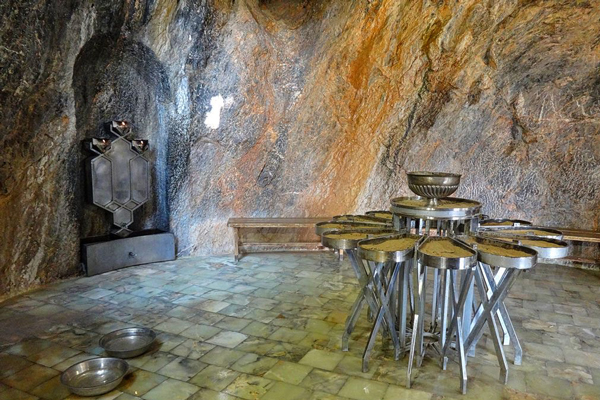
Why is the Zoroastrian Shrine Called Chak Chak?
The Zoroastrian shrine gets its name, “Chak Chak,” from the sound of water dripping from the rocks, resembling a ‘drip-drip’ sound. This water holds importance as it serves as the primary water source for the Chak Chak Shrine in Yazd.
Exploring the Chak Chak Mountain reveals a unique five-story structure, designed in a staggered, terraced manner, where each level’s roof serves as the courtyard for the next. These rooms, called “Khileh,” cater to the rest and accommodation of Zoroastrian pilgrims. The oldest room, dating back approximately 150 years to the era of Naser al-Din Shah, holds historical significance.
Within one of these rooms, there is a sacred well, where Zoroastrian followers tie a thread around its rope to make wishes come true.
Next to these accommodations, a kitchen and oven are constructed for the convenience of pilgrims, allowing them to cook and offer sacrificial lambs.
Visiting the Chak Chak Shrine for Non-Zoroastrians
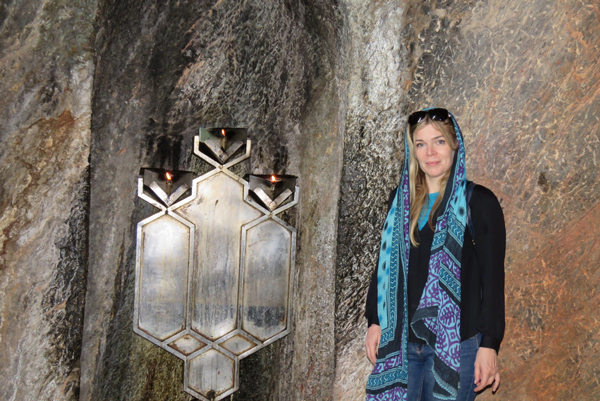
Non-Zoroastrian visitors are welcome to explore the shrine but cannot stay overnight in these rooms. As you ascend the stairs toward the upper levels of the shrine, you’ll come across inscriptions from the Zoroastrian holy book, the Avesta, on the rocks. These inscriptions include phrases such as “In the world, there is only one path, the path of salvation.”
At the summit, a beautiful golden-colored door, adorned with the image of a spear-wielding Achaemenid soldier, marks the entrance to a stone building resembling the mouth of a cave. Upon entering and removing shoes, visitors step onto the marble stones of the fire temple. Since the temple is nestled within the mountain and water drips from certain areas, the floor remains damp and cool.
Within the fire temple, there is a wall positioned between two stone boulders specifically designated for lighting candles.
In front of it stands the Zoroastrian eternal flame, surrounded by tear-shaped vessels for lighting candles and incense, forming a lotus flower pattern. Zoroastrians engage in the act of lighting candles and incense at this location for their prayers.
The attention is drawn to the darkened, smoke-stained walls caused by the eternal fire and the ancient plane tree emerging from the rocks, acknowledged as a natural heritage of Iran. Looking up, you’ll see a stone ceiling with a chandelier for illumination and a section where water drips, collected in vessels for drinking and blessing purposes.
Steps to Reach Chak Chak Shrine
To reach the Pir-e Sabz Shrine nestled in the mountains, visitors must climb a path. For safety, a total of 360 steps have been built along the winding path leading to the shrine. Therefore, individuals with heart or respiratory issues, mobility impairments, or anyone who might find climbing many steps challenging should reconsider visiting Chak Chak.
Understanding the Water-Dripping Phenomenon
Dutch geologists have provided a scientific explanation for the water dripping from Chak Chak Mountain. They found that the mountain is positioned above an underground fault line approximately one kilometer deep. When an underground water channel encounters this fault, it is redirected upward due to high pressure.
Facilities at Chak Chak Shrine
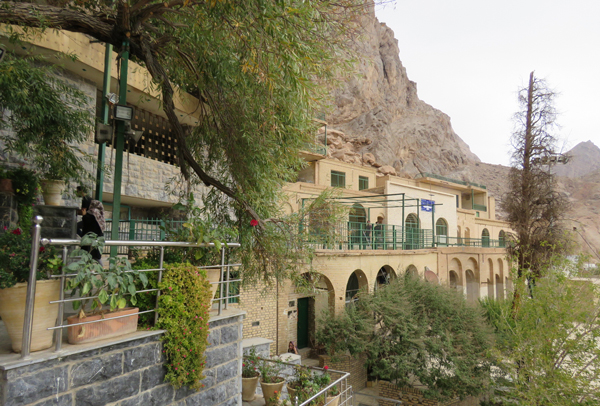
Chak Chak Shrine has limited facilities, providing only electricity, water, toilets, and rooms exclusively for Zoroastrians. Visitors are advised to bring essential items from the nearby cities of Yazd or Ardakan.
Etiquette for Visitors at Chak Chak Shrine
Similar to how mosques welcome visitors of other faiths, Chak Chak Shrine is open to tourists of different religions, fostering cultural and religious understanding. Visitors should uphold cleanliness, remove shoes, and dress appropriately, including wearing head coverings. Invitation cards are necessary for specific Zoroastrian ceremonies, and non-Zoroastrians are not allowed during certain events.
Best Time to Visit Chak Chak Shrine
For a comfortable visit, choose the cooler months of autumn (October and November) or spring (April and May) when tackling the 360 steps is less challenging due to the milder temperatures. It’s advisable to avoid visiting during religious events unless you have an invitation.
Chak Chak Shrine’s Location
Location: Situated northwest of Yazd, Iran, approximately 43 kilometers east of Ardakan, in the Khavaranq district.
Directions to Chak Chak Shrine
The shrine rests amid the Ardakan and Anjireh mountains within the Chak Chak mountain range, a renowned location among the residents of Yazd and Kerman. It’s a 96-kilometer journey from Yazd and a 43-kilometer trip from Ardakan.

